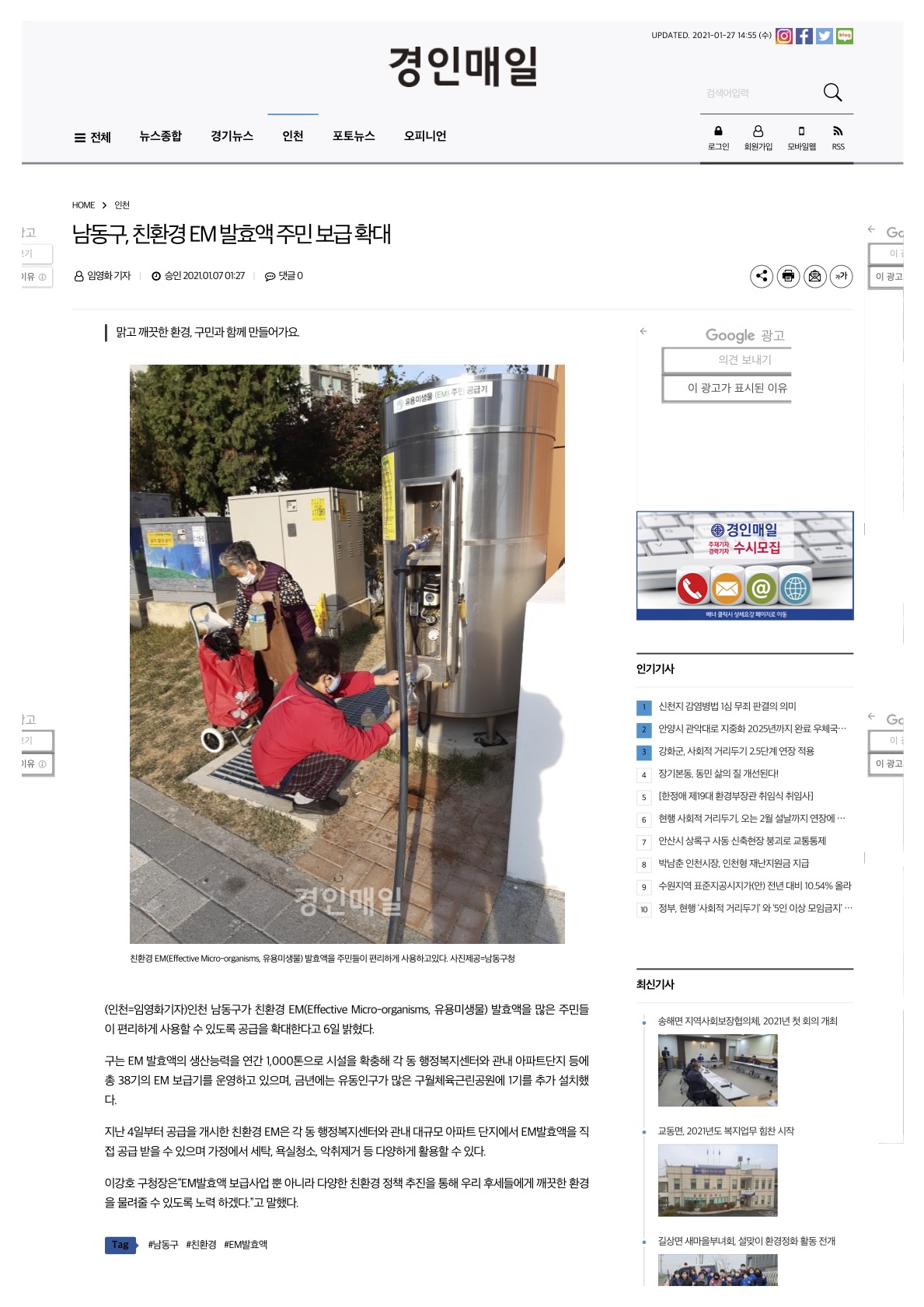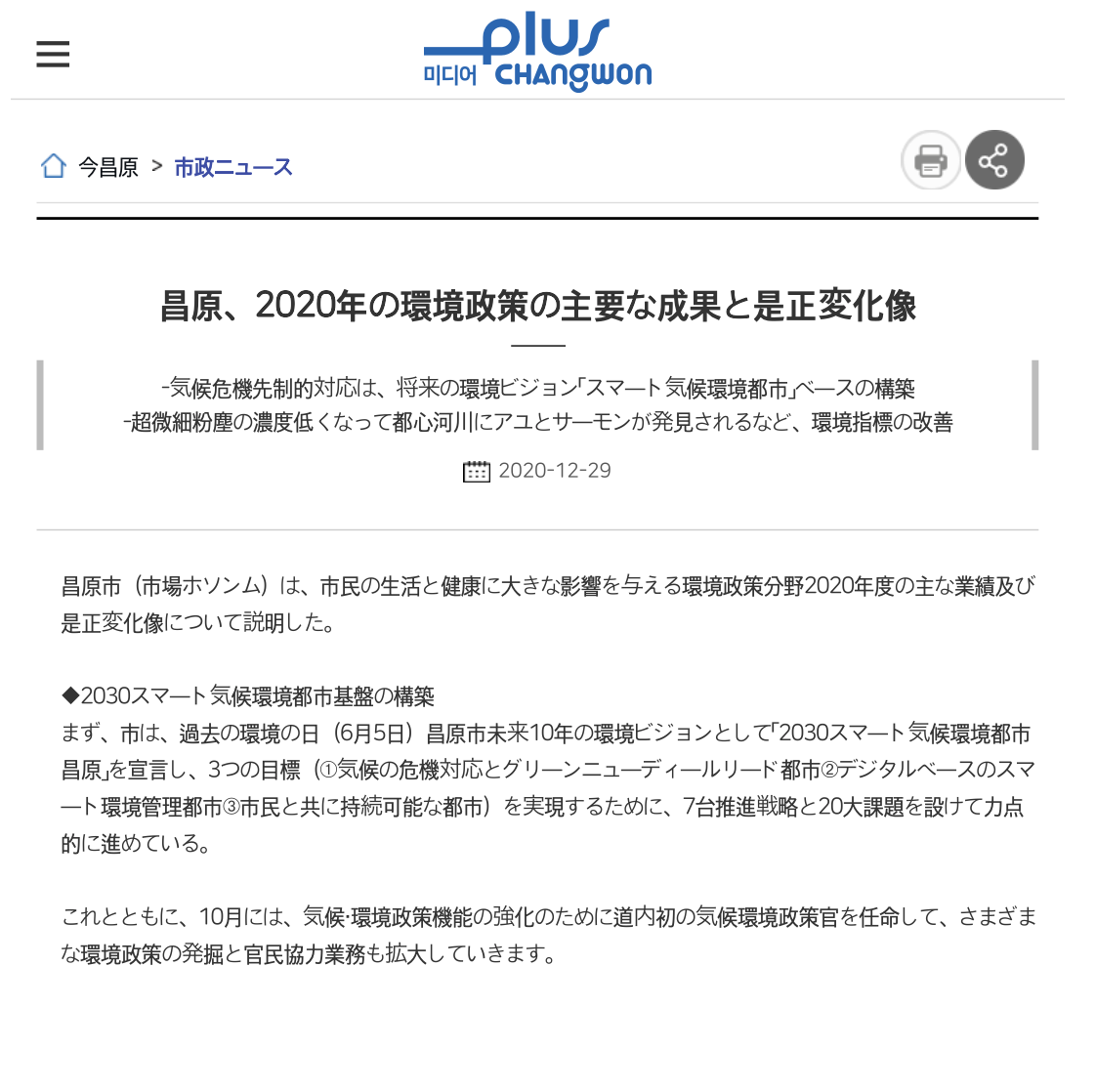
Article #163 Sustainable Development Goals (SDGs) and EM Activities: Part 2

In my previous article in this series, I discussed the use of EM as indispensable to make SDGs more effective, but basically the important thing is to use EM in any situation in ordinary life as well as in production sites, as freely as one would breathe air and use water.
The film SOSEI II-REVIVAL introduces Korea, which is one of the more developed countries in terms of EM use. Jeonju University has a graduate department of EM, EM has been widely used in South Korea, and its effects in agriculture and the environment have been verified by academic societies.
People have used EM on their own initiative to deal with the novel coronavirus and improve various environments, but people thought it was difficult to overcome the challenge of the 14 th SDG, protecting the abundance of the seas.
The solution to this problem is, through the application of EM, to transform land-based pollution, which is a source of pollution in the ocean, into a purifying source. The EM information in South Korea shows how the incorporation of EM into daily life can be accepted as common sense and is worth studying.
A survey on pollution in Tokyo Bay conducted about fifteen years ago concluded that it was nearly impossible to solve all of the outstanding issues. Recently, however, some books have been published that reveal Tokyo Bay functioning as a rich, abundant sea, though they ignore the fact that more than 6,000 tons of EM was put into Tokyo Bay.
In addition, there are comments by experts that contend that the cleanliness of Tokyo Bay is a result of the purification power of nature; if this is true, though, that means the views given fifteen years ago are plain wrong. In contrast, South Korea officially acknowledges the achievements of EM in cleaning Masan Bay, Changwon City.
<(Partial quote from the following article, Japanese translation)>
[South Korea] Gyeongin Daily Newspaper: Namdong-gu, expanding the spread of eco-friendly EM fermented liquid among residents.
 Creating a clean environment together with the people of Namdong-gu.
Creating a clean environment together with the people of Namdong-gu.
Incheon Namdong-gu announced on the 6 th that it will expand the supply of environmentally friendly EM (Effective Microorganisms) fermented liquid so that more residents can easily use it. The ward’s EM fermented liquid production
capacity has been expanded to 1,000 tons per year, and a total of thirty-eight EM dissemination units have been set up and operated in administrative welfare centers and in apartments in each building. In September, one additional unit was installed in a
nearby park devoted to physical education.
From the 4th, we started supplying environment friendly EM fermented liquid to the administrative welfare centers in each building and to large-scale condominiums. The head of the ward, Mr. Lee Gan-ho, explained: “In addition to a project to disseminate
EM, we are promoting various environmental policies in order to create a clean environment for future generations.”
[[Source: Gyeongin Daily Newspaper: Namdong-gu expanding
the use of eco-friendly EM fermented liquid among residents.
http://www.kmaeil.com/news/articleView.html?idxno=259591)]]
[South Korea] Changwon Municipal News: Major Environmental Policy Achievements in 2020 and Proof of Corrective Changes in Changwon

 - As a pre-emptive response to the climate crisis, we have constructed the foundations of a future environmental vision, a “smart-climate environment city”
- As a pre-emptive response to the climate crisis, we have constructed the foundations of a future environmental vision, a “smart-climate environment city”
- We have improved environmental indicators, such as the presence of Ayu (sweetfish) and salmon in a river in the center of the city due to a low concentration of ultrafine dust
Mayor of Changwon City, Huh Sungmoo, explained the main achievements and corrective changes in the environmental policy field in 2020, which have
had a great impact on the lives and health of citizens.
"Water quality of the rivers in the center of the city have improved, and Ayu (sweetfish) and salmon have been found there"
In 2020, as a result of promoting various water quality improvement projects, there has been a significant improvement in the water quality of the major rivers in the city center. Analysis of the water quality in ten spots on the major rivers in this district revealed that while the average concentration from 2017 to 2018 was 3.5ppm (3 rd grade), in November 2020 the standard average water quality was 2.2ppm (2 nd grade). This demonstrates how water quality has gradually improved over the three years.
The water quality improvement project ran smoothly because of the monthly river water quality analysis, the carrying out of investigations into the degree of pollution of the rivers, and projects involving the use of green rainwater boxes and the application of EM (effective microorganisms), as well as the cleaning of village ditches and tributaries.
As a result of these efforts, Masan Bay and the rivers in the city center of Changwon, dubbed the Sea of Death due to the pollution of rivers, which has been seen as a symbol of urbanization and industrialization, have been greatly improved. Ayu (sweet fish) and salmon have returned to the rivers in the city center, Namcheon, in Changwon, for the first time in half a century.
[[Source: Changwon Municipal News: Major Environmental Policy Achievements in 2020 and Proof of Corrective Changes in Changwon
https://www.changwon.go.kr/news/article/view.do?idx=4788&mId=0201000000]
記事一覧へ
|
